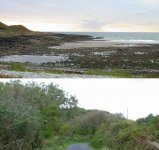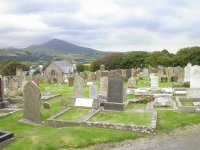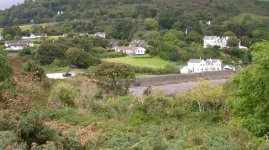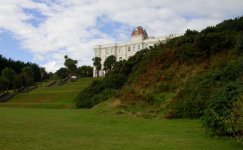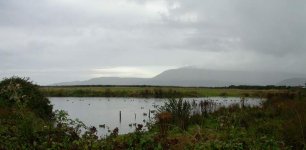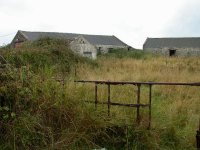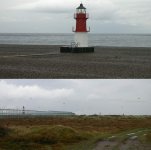CJW
Hit-and-run WUM
I must admit at the outset that it’s not a Local Patch in the strictest sense of the word, more a series of ‘good looking’ habitats that I cover every Saturday morning.
Here’s this morning’s session:
Port Mooar (pronounced ‘more’) SC488908
A small bay with rocky pools and exposed patches of sand. Just inland is a small wooded and scrubby ‘valley’, very reminiscent of a miniature Cornish valley.
I arrived here this morning just as the sun was starting to peep over the Cumbrian hills on the horizon. There was fairly strong easterly breeze blowing and after last night’s heavy downpours it had great potential for an arrival of migrants.
The very first bird I heard as I got out of the car was a Greenshank calling from the rocky pools on the shore and I quickly located it as it flew across the bay. There was actually very little on the shoreline apart from the usual Redshank and Oystercatchers, but on the pebble bank just before the beach there were several Rock Pipits, Meadow Pipits and Pied Wagtails. A Grey Wagtail was also seen as it stood on the rocks in the middle of the stream the crosses the beach and a Stonechat was on top of the bushes at the side of the car park. Walking inland to the small valley I immediately picked up on Robin song – the bushes were alive them. “This has potential”, I though to myself and proceeded to find shelter from the wind so I could scan the rest of the cover in comfort. There were many Goldcrests calling amongst them were several Chiffchaffs and a male Blackcap.
Just then two Choughs flew overhead calling closely followed by a circling female Sparrowhawk.
I suppose, like many ‘patch workers’, we all have a favourite area on our rounds. Mine is a single hawthorn bush which is heavily overgrown with brambles and Honeysuckle. It’s strange phenomenon, but any bird in this valley will sooner or later pay a visit to this bush. This morning it held a good variety of species – Song Thrush, Blackbird, more Chiffchaffs, a Whitethroat, several Greenfinch and Goldfinch and one of my particular favourites, a small party of Long-tailed Tits, along with Blue Great and Coal Tits. I watched the area for a while but nothing else of note caught my attention so I decided to move on to the next stop on my route.
Here’s this morning’s session:
Port Mooar (pronounced ‘more’) SC488908
A small bay with rocky pools and exposed patches of sand. Just inland is a small wooded and scrubby ‘valley’, very reminiscent of a miniature Cornish valley.
I arrived here this morning just as the sun was starting to peep over the Cumbrian hills on the horizon. There was fairly strong easterly breeze blowing and after last night’s heavy downpours it had great potential for an arrival of migrants.
The very first bird I heard as I got out of the car was a Greenshank calling from the rocky pools on the shore and I quickly located it as it flew across the bay. There was actually very little on the shoreline apart from the usual Redshank and Oystercatchers, but on the pebble bank just before the beach there were several Rock Pipits, Meadow Pipits and Pied Wagtails. A Grey Wagtail was also seen as it stood on the rocks in the middle of the stream the crosses the beach and a Stonechat was on top of the bushes at the side of the car park. Walking inland to the small valley I immediately picked up on Robin song – the bushes were alive them. “This has potential”, I though to myself and proceeded to find shelter from the wind so I could scan the rest of the cover in comfort. There were many Goldcrests calling amongst them were several Chiffchaffs and a male Blackcap.
Just then two Choughs flew overhead calling closely followed by a circling female Sparrowhawk.
I suppose, like many ‘patch workers’, we all have a favourite area on our rounds. Mine is a single hawthorn bush which is heavily overgrown with brambles and Honeysuckle. It’s strange phenomenon, but any bird in this valley will sooner or later pay a visit to this bush. This morning it held a good variety of species – Song Thrush, Blackbird, more Chiffchaffs, a Whitethroat, several Greenfinch and Goldfinch and one of my particular favourites, a small party of Long-tailed Tits, along with Blue Great and Coal Tits. I watched the area for a while but nothing else of note caught my attention so I decided to move on to the next stop on my route.




